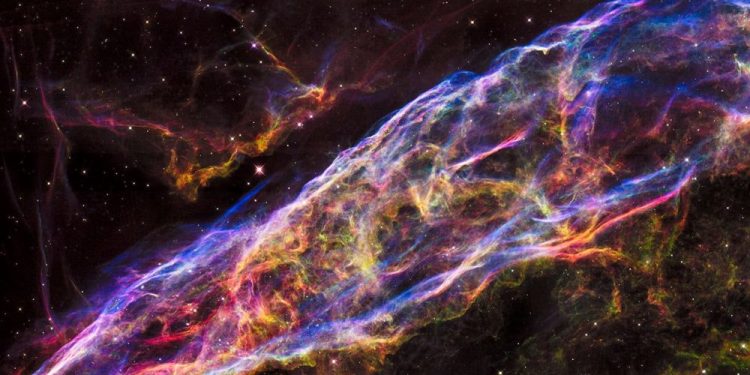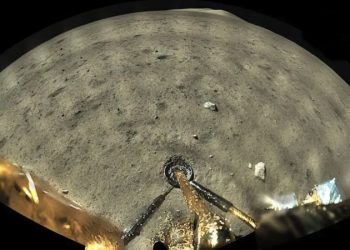Researchers have leveraged IBM’s cutting-edge quantum computing technology to simulate the creation of particles in an expanding universe. This milestone demonstrates the potential of quantum simulations to explore the fundamental processes shaping the cosmos, marking a major leap forward in computational physics.
Scientists have long grappled with developing a unified quantum theory of gravity, but the challenge remains daunting. As an alternative, physicists use quantum field theory in curved spacetime (QFTCS), a framework that combines Einstein’s general relativity with quantum mechanics by treating spacetime as a classical entity while describing matter and force fields within it as quantum systems. This hybrid approach allows researchers to probe quantum effects in dynamic cosmic environments—without needing a fully realized theory of quantum gravity.
The research team successfully modeled how quantum fields behave in an expanding universe by harnessing the power of IBM’s advanced quantum processors. The findings, published in Scientific Reports, offer new insights into how quantum particles emerge in response to cosmic expansion.
Overcoming Quantum Computing’s Challenges
Despite the promise of quantum simulations, today’s quantum computers remain in the “noisy intermediate-scale quantum” (NISQ) era. These machines are highly sensitive to environmental interference and limited by small qubit counts, making precise calculations difficult.
To address this, the researchers relied on error mitigation techniques instead of traditional quantum error correction, which requires a prohibitively large number of qubits.
“We used only four qubits, one for each possible state of the field,” explained lead author Marco Díaz Maceda, a graduate researcher at Universidad Autónoma de Madrid. “However, because our circuit involved a large number of quantum gates, errors accumulated throughout the execution. We applied error mitigation techniques to improve the fidelity of our computations.”
One of the key methods employed was zero-noise extrapolation (ZNE), a technique that artificially increases noise in the system and then mathematically extrapolates back to estimate the error-free results.
Simulating Particle Creation in an Expanding Universe
In classical physics, a vacuum is considered empty. However, in quantum mechanics, even a vacuum teems with energy fluctuations. When spacetime expands—such as during the rapid inflationary period of the early universe—these fluctuations can manifest as actual particles.
To replicate this phenomenon, the team based their simulation on the Friedman-Lemaître-Robertson-Walker (FLRW) metric, a model that describes a homogeneously expanding universe. They modified the Klein-Gordon equation, a fundamental equation in quantum mechanics, to account for spacetime curvature.
The simulation hinged on a mathematical concept known as Bogoliubov transformations, which describe how quantum states evolve over time. By encoding quantum field states into qubits and mapping their evolution onto quantum gates, the researchers successfully simulated the creation of particles within an expanding universe.
A Glimpse into the Future of Quantum Cosmology
The results of the simulation closely matched theoretical predictions, confirming the feasibility of using quantum computers to model complex cosmological processes. While noise remains a hurdle, the study demonstrates that digital quantum simulations are already powerful tools for exploring the universe’s most profound mysteries.
“This research opens new doors for simulating early universe phenomena,” Maceda noted. “As quantum computing technology advances, we’ll be able to probe even deeper into the fundamental nature of reality.”
Maceda’s mentor, Dr. Sabín, has previously applied quantum computing techniques to research topics such as gravitational entanglement, black hole evaporation, and the causal structure of spacetime. This latest study further solidifies the role of quantum simulations in expanding our understanding of the cosmos.
With rapid advancements in quantum computing, scientists are on the verge of unlocking unprecedented capabilities in cosmological research. The ability to simulate high-energy particle interactions in curved spacetime could shed light on unresolved questions in physics, potentially bringing us closer to a deeper understanding of the universe’s origins.
Join the Conversation!
Have something to share or discuss? Connect with us on Facebook and join like-minded explorers in our Telegram group. For the latest discoveries and insights, make sure to follow us on Google News.











